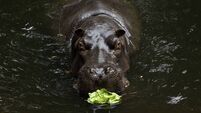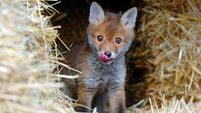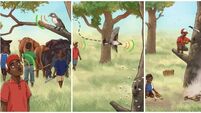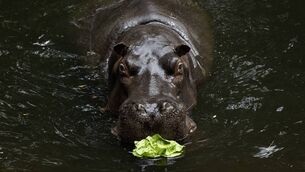Anja Murray: Dwindling diversity could see our 40 shades of green reduced to ryegrass and spruce
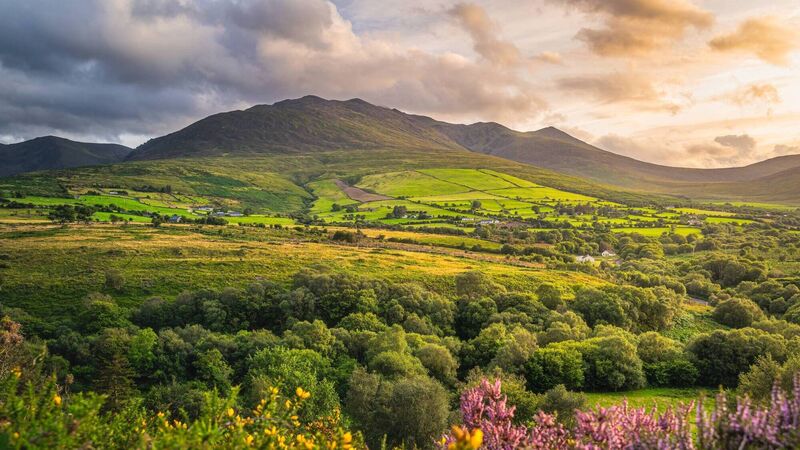
Ireland's 40 shades of green are grasslands, a result of thousands of years of low-intensity farming
Ireland is famous for having 40 shades of green. Green is the colour of St Patricks Day, shamrocks, and the branding of everything distinctly Irish. The 40 shades of green come from hedge-bound fields, wild wooded corners, and forested hillsides. But most of all, the 40 shades of green are grasslands, a result of thousands of years of low-intensity farming. Two-thirds of Ireland’s land area is dedicated to agriculture and more than 80% of this is grassland and rough grazing. Right now, as the spring equinox is upon us and soils are starting to warm up, grass is starting to grow again.
It's easy to assume that grasslands are more or less all the same. But we have dozens of different types of ‘semi-natural’ grasslands across Ireland, each with its own suite of specialised plants and animals, each honed by soil type, altitude, location and management. Grasslands are called ‘semi-natural’ rather than ‘natural’ because they rely on some sort of human management - normally grazing by farm animals - to stay as grassland rather than revert to woodland, the natural climax vegetation.
The wealth of wildflowers in a semi-natural grassland can be heavenly, with more than 40 different species of flowering plant growing together in a just a few square metres, as well as dozens of different types of grass, each with their own distinctive ‘flowering’ head. Beneath the ground there lives a plethora of fungal threads and thousands of soil-dwelling creatures.
Because of their enormous diversity of grasses and flowering plants, semi-natural grasslands are also home to hundreds of different species of insects. Colourful shield bugs mingle with ladybirds, web weaving spiders and night-flying moths. Orange-tip butterflies emerge early in the year, their lifecycles tied to the flowering of the cuckoo flower in April, also named for its association with the cuckoos who return from Africa each spring to feast on the insect life sustained by the rich grasslands habitats.
Anthills in grassland are a sign that this habitat has been in place for hundreds or even thousands of years. Little field-hoppers, a smaller cousin of the grasshopper, flit through the long leaves of plantain, whose seed heads have entertained generations of children playing ‘soldiers’ with the robust brown flowering heads.
Five different species of grasshopper live in Irish grasslands, each with its own habitat preference and its own distinctive song. Dozens of different species of solitary bees make nests in the ground. Bumblebees, butterflies and hoverflies are busily gathering nectar and pollen, unwittingly helping the flowers to breed by transporting tiny pollen grains from flower to flower.
The vast majority of these thousands of plant and animal species are eliminated when a semi-natural grassland is ploughed, drained, reseeded or doused with fertilisers.
In turn, most insects struggle to survive in a field where just a few grasses dominate the sward. So insect life is much diminished with just a few applications of fertiliser. Even more dramatic changes occur when semi-natural grassland is ploughed up and re-seeded. Whole landscapes have become dominated by just one species of grass – perennial ryegrass, now probably the most common plant in Ireland.
The extent to which the diversity of grasslands is diminishing is startling. The few surveys that have been carried out have revealed alarming rates of loss. In Ireland, over a six-year period from 2010, almost a third of all calcareous grasslands have been lost and over a quarter of lowland hay meadows. This is a lot to have lost in just one six-year period. Grasslands full of life, one of the core things at the basis of our cultural identity, are slipping away quietly, with barely a nod of farewell from the majority of the Irish population.
There are several reasons for this dramatic change in such a short space of time. In the uplands, species-rich semi-natural pastures are drained and planted up with sitka spruce. In this way, thousands of acres of ancient species-rich grassland habitats have been subsumed.
In the lowlands, agricultural drainage schemes have transformed wet fields on the valley floor which were traditionally used to make hay, valuable cattle feed through the winter months. For 1,000 years or more, flood plain meadows were fertilised naturally by the floodwaters that spilled over them, the soil enriched by natural silts and clays that are deposited by floodwaters. Since the 1970s, floodplain grasslands all over the country have been eliminated through drainage schemes.
Everywhere that land is suitable for ‘improvement’, chemical fertilisers are applied, ryegrass is seeded in, productivity is ramped up, export markets found, dairy output ramped up, and biodiversity diminishes. With the annihilation of our species-rich and semi-natural grasslands, comes the elimination of bees and other insects, iconic farmland birds such as curlew, lapwing and barn owl.
At the other end of the spectrum of threats is abandonment, when keeping a few dry stock cows no longer makes financial sense. Abandonment of management leads to scrub encroachment and eventual reversion to woodland. This ‘natural rewilding’ is not necessarily a bad thing, but is a concern to conservationists when increasingly rare grassland types and the species that depend on them are nearing extinction.
Species-rich grasslands depend on sensitive farming, and for this, farmers need support. If we wish for a future for semi-natural grasslands here, decent information and financial support has to be directed to those farmers who are willing to carry on with traditional low-intensity farming practices. Tentative supports have been in place, though are too scant to be effective.
With war in Ukraine, there is havoc, trauma and huge loss of life. Global supply chains are impacted too. Grain for cattle feed and fertiliser supplies are in jeopardy. The highly specialised, ryegrass-based dairy systems here, heavily reliant on imported fertiliser and grain, are revealing their vulnerability. Panic is setting in as the industry seeks ways to sustain its growth for the export model and pressure is being applied to roll back on conservation schemes, when exactly the opposite is needed.
As we celebrate St Patrick's Day this year, we might think differently about the 40 shades of green. Are we happy to let diversity dwindle and instead of 40 shades of green, we’ll soon be left with a much-reduced palette of ryegrass and spruce. We’d be doing well to think less about the past and more about the future.
- Anja Murray is an ecologist, broadcaster, regular presenter on ‘Eco Eye’ on RTÉ 1 and writes the weekly ‘Nature File’ on RTÉ Lyric FM.




